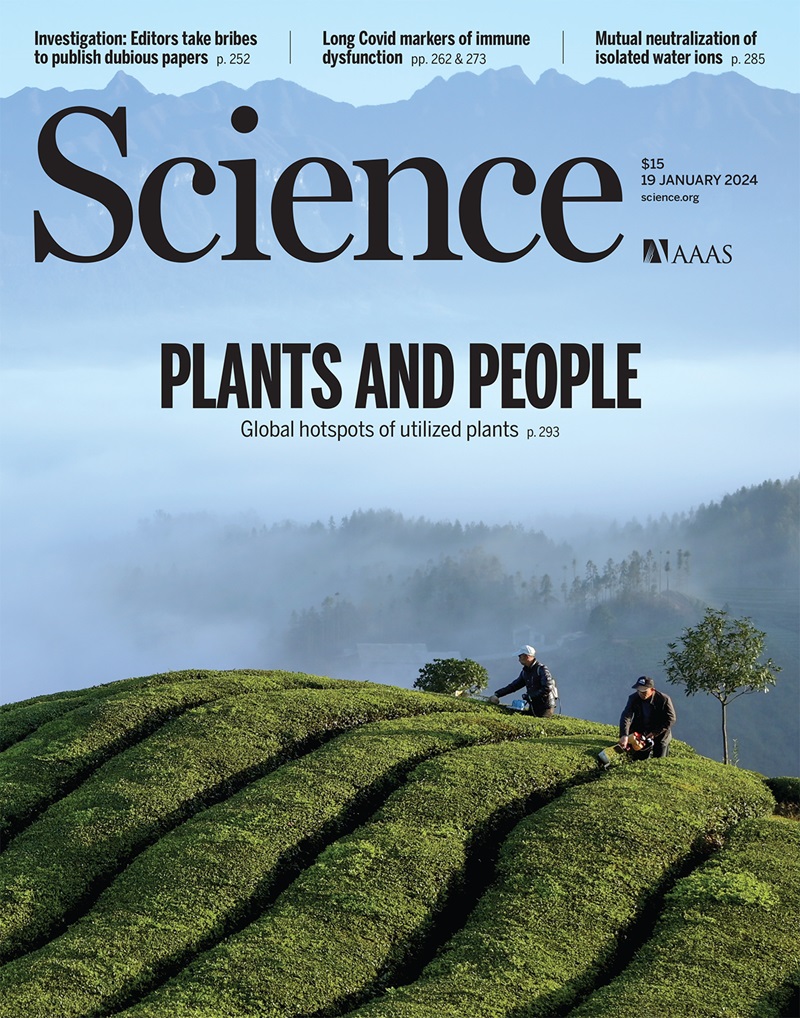混合对巴西人口进化和健康的影响。
IF 45.8
1区 综合性期刊
Q1 MULTIDISCIPLINARY SCIENCES
引用次数: 0
摘要
巴西是拉丁美洲最大的国家,尽管拥有世界上最大的混血人口,但在基因组研究方面的代表性不足。在这项研究中,我们从巴西人口中生成了2723个高覆盖率的全基因组序列,包括代表不同种族背景的城市、农村和河流社区。我们揭示了巴西人令人印象深刻的基因组多样性,确定了800万个以前未知的变异,包括36,637个预测有害的和可能影响人口健康的变异。我们发现这些有害变异与祖先之间存在正相关关系。巴西基因组是由非随机交配形成的全球单倍型马赛克,在18世纪和19世纪达到顶峰。在这种多样性中,祖先特异性单倍型表现出不均匀的时空分布。我们还在这个多样化的群体中确定了假定选择的基因,这些基因主要与生育能力、免疫反应和代谢特征有关。本文章由计算机程序翻译,如有差异,请以英文原文为准。
Admixture's impact on Brazilian population evolution and health.
Brazil, the largest Latin American country, is underrepresented in genomic research despite boasting the world's largest recently admixed population. In this study, we generated 2723 high-coverage whole-genome sequences from the Brazilian population, including urban, rural, and riverine communities representing diverse ethnic backgrounds. We reveal the impressive genomic diversity of Brazilians, identifying >8 million previously unknown variants, including 36,637 predicted deleterious and potentially affecting population health. We found a positive correlation between these deleterious variants and ancestry. Brazilian genomes are a global haplotype mosaic shaped by nonrandom mating, with peak admixture in the 18th and 19th centuries. Within this diversity, ancestry-specific haplotypes exhibit an uneven spatiotemporal distribution. We also identified putatively selected genes in this diverse population, primarily linked to fertility, immune response, and metabolic traits.
求助全文
通过发布文献求助,成功后即可免费获取论文全文。
去求助
来源期刊

Science
综合性期刊-综合性期刊
CiteScore
61.10
自引率
0.90%
发文量
0
审稿时长
2.1 months
期刊介绍:
Science is a leading outlet for scientific news, commentary, and cutting-edge research. Through its print and online incarnations, Science reaches an estimated worldwide readership of more than one million. Science’s authorship is global too, and its articles consistently rank among the world's most cited research.
Science serves as a forum for discussion of important issues related to the advancement of science by publishing material on which a consensus has been reached as well as including the presentation of minority or conflicting points of view. Accordingly, all articles published in Science—including editorials, news and comment, and book reviews—are signed and reflect the individual views of the authors and not official points of view adopted by AAAS or the institutions with which the authors are affiliated.
Science seeks to publish those papers that are most influential in their fields or across fields and that will significantly advance scientific understanding. Selected papers should present novel and broadly important data, syntheses, or concepts. They should merit recognition by the wider scientific community and general public provided by publication in Science, beyond that provided by specialty journals. Science welcomes submissions from all fields of science and from any source. The editors are committed to the prompt evaluation and publication of submitted papers while upholding high standards that support reproducibility of published research. Science is published weekly; selected papers are published online ahead of print.
 求助内容:
求助内容: 应助结果提醒方式:
应助结果提醒方式:


